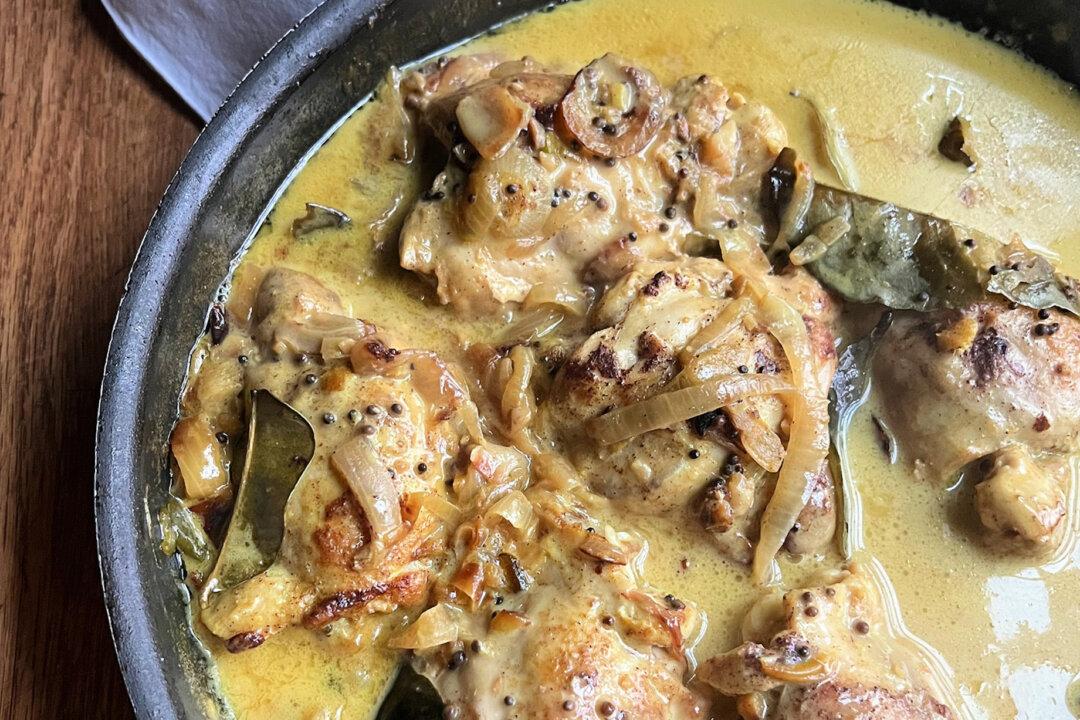PITTSBURGH — Laura Ali has helped countless clients fine-tune their diets to promote healthy eating habits in her three decades as a registered dietitian and culinary nutritionist, 16 of them in a clinical setting at the Cancer Institute at UPMC, now Hillman Cancer Institute.
Good nutrition is a cornerstone of good health, with study after study showing that adults who eat an adequate, well-balanced diet not only live longer, but also lower their risk of heart disease, diabetes and certain cancers.
Yet it was Ali’s own genetics that got her thinking about the new eating plan known as the MIND diet, which is meant to support memory. She was so struck by its proposed benefits that during the pandemic, she wrote a cookbook with 65 simple recipes based on its recommendations. Published in March, it’s called “Mind Diet for Two” (Rockridge Press, $14.99)
Both Ali and her husband have a family history of Alzheimer’s disease and have watched close relatives suffer from dementia. So as she inched toward middle age, the Pittsburgh native grew increasingly intrigued by the role food plays in long-term cognitive health. Hoping to avoid the same fate, “I wanted to learn more to see if there were things we could do to slow down or prevent dementia altogether,” she said.
Her reading led her to the work researchers at Rush University in Chicago have been doing with elderly residents via the MIND diet, the first eating plan that focuses on foods that specifically support and improve cognitive health.
Created to slow the loss of brain function that happens with age, the MIND diet combines two diets considered to be super-good for the heart: the mostly plant-based Mediterranean diet, and the low-sodium DASH diet, developed in the 1990s by the National Heart, Lung and Blood Institute to prevent and treat high blood pressure.
Both build meals around fruits, vegetables and whole grains, with varying amounts of lean meats, fish, sweets and healthy fats allowed per day or week. The MIND diet takes it a step further by encouraging regular consumption of 10 types of “brain healthy” foods — berries, leafy greens, other vegetables, nuts, beans, whole grains, fish, poultry, olive oil and red wine — and limiting foods in five groups including red meats, butter and stick margarine, cheese, pastries and sweets, and fried or fast food, because they are high in saturated fat and trans fat and known to increase cholesterol.
When people age, Ali writes, plaque builds up on the brain, causing the communication system to short-circuit and interfere with the brain’s messages to the body. Substances called flavonoids, found in foods like fruits, vegetables, cocoa and wine, contain antioxidant and anti-inflammatory properties, which protect the body’s cells from damage and reduce inflammation.
That’s important because Alzheimer’s patients tend to have brains that are inflamed, while people with hypertension and diabetes are at a great risk for stroke, which is a major factor for vascular dementia and Alzheimer’s.
“It’s just a healthy way of eating,” Ali says.
Research suggests that the MIND diet lowered the risk of Alzheimer’s by as much as 53% in participants who rigorously followed to the diet to a T, and by about 35% in those who adhered to it moderately well. But improvements start to weaken at about year 7.
Ali says she knew the cookbook would probably strike a chord with home cooks because people today are so much more aware of what they should be eating, and the role that good nutrition can have in maintaining and improving health. While we still want the convenience of drive-through, or eating quickly on the run or at our desks, “there’s true desire to eat better,” she says.
In deciding which foods to include, Ali — a lifelong cook who has done culinary consulting for Giant Eagle, StarKist and Del Monte Foods — chose 65 recipes that use ingredients readily available in any grocery store. She also steered clear of recipes that required special equipment like an air fryer or Instant Pot because not everyone has one.
“I approached it as what [the average person] typically eats,” she says — quick breakfasts, simple lunches and mains that can be made in 30 minutes or less.
Many are gluten- or dairy-free, and all come with nutritional information, along with prep and cook times. She also includes a servings chart, kitchen tips and a seven-day sample menu to get you started.
The cookbook is unique in that all the recipes serve just two instead of the standard four to six for a family. That’s because by the time most people are worried about dementia, they are often cooking for two most of the time as empty nesters.
“At this point in life, people are often caring for elderly relatives that may have dementia and are seeing the real effects it has. I think they become worried about their own health as they age.”
With food waste a growing problem, people also don’t want to have to throw away leftovers.
“But most can easily be doubled for four or more,” she says.
If you’re someone who doesn’t already eat a lot of fruits, grains, fish or leafy vegetables, it can take some time to adjust to the MIND diet — for your body as well as your palate. (The increased fiber can cause bloating, gas or constipation.) She suggests starting easy by sneaking some of the ingredients into your dishes — say, add some spinach or salmon to your scrambled eggs, serve a leafy salad with dinner, or stir vegetable into your pasta.
Tougher still may be learning to limit favorites like cheese, butter and steak. But the daily glass of red wine you’re allowed, she says with a laugh, makes up for it.






